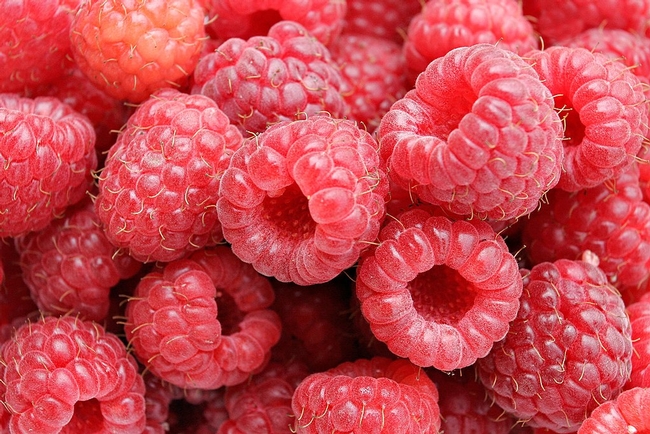When growers are considering a new crop to plant, and penciling out their expenses and income, cost estimates from the University of California may help. A new cost and return study for commercially producing raspberries released by UC ANR Agricultural Issues Center and UC Cooperative Extension includes an expanded section on labor.
Sample costs to establish, produce and harvest raspberries for fresh market in Santa Cruz, Monterey and San Benito counties are presented in “Sample Costs to Produce and Harvest Fresh Market Raspberries in the Central Coast Region – 2017.”
“The study focuses on the many complexities and costs of primocane raspberry production over a three-year period, including crop establishment, fertility practices, overhead tunnel management, harvest and rising labor costs," said Mark Bolda, UC Cooperative Extension farm advisor and co-author of the study.
The analysis is based upon a hypothetical well-managed farming operation using practices common to the region. The costs, materials, and practices shown in this study will not apply to all farms. Growers, UC Cooperative Extension farm advisors and other agricultural associates provided input and reviewed the methods and findings of the study.
“This raspberry cost and return study is the result of significant effort on the part of UC Cooperative Extension, the Agricultural Issues Center and several grower and industry collaborators, who shared their expertise and contributed mightily to the end product,” said Laura Tourte, UC Cooperative Extension farm management advisor and co-author of the study.
This study assumes a farm size of 45 contiguous acres of rented land. Raspberries are planted on 42 acres. The crop is hand-harvested and packed into 4.5-pound trays. There is a fall harvest during production year 1, a spring and fall harvest during production year 2, and a spring harvest during production year 3. Each harvest is three months long.
The authors describe the assumptions used to identify current costs for production material prices and yields. Tables show the phase-in schedules for California's minimum wage and overtime laws through the year 2022. Other tables show the monthly cash costs, the costs and returns per acre, hourly equipment costs, and the whole farm annual equipment, investment and business overhead costs.
Free copies of “Sample Costs to Produce and Harvest Fresh Market Raspberries in the Central Coast Region - 2017” can be downloaded from the UC Davis Department of Agricultural and Resource Economics website https://coststudies.ucdavis.edu. Sample cost of production studies for many other commodities are also available at the website.
The cost and returns studies program is funded by the UC Agricultural Issues Center and UC Cooperative Extension, both of which are part of the UC Division of Agriculture and Natural Resources, and the UC Davis Department of Agricultural and Resource Economics.
For additional information or an explanation of the calculations used in the studies, contact the UC Agricultural Issues Center at (530) 752-4651 or UC Cooperative Extension advisors Mark Bolda at (831) 763-8025 or Laura Tourte at (831) 763-8005 in Santa Cruz County.
